Several major U.S. cities previously hit hard are showing signs of network recovery, but others are still experiencing significant disruptions
For the past three weeks, our team has been tracking internet performance in hundreds of American cities amid the coronavirus pandemic.
Last week, we expanded our analysis to include rural America, as well as adding in data on upload speeds, which have been central to the discussion around working (and learning) from home.
Though we have observed some degree of degradation in hundreds of networks across the nation, many of these markets are showing signs of improvement this week. As providers continue to optimize their network infrastructure in an effort to cope with this new normal, here is what the data shows for cities and towns across the U.S.
Key Findings
- Internet performance in the U.S. improved overall, with 97 cities (48.5%) recording download speed degradations this week (down from 117, or 59% last week). 139 cities (69%) have reported upload speed disruptions, which is also down from last week’s 144, or 72%.
- Combined rural download speeds are rallying, climbing to a median of 16.2 Mbps compared to last week’s 15.5 Mbps. Upload speeds in rural areas have remained consistent from the week of 3/22, albiet slightly down from previous weeks.
- Three cities are experiencing upload speed drops of greater than 40% out of range, including Baltimore, Maryland, Los Angeles, California, and Flushing, New York.
- Four cities are still experiencing significant download speed drops: Lawrenceville, Georgia, Rochester, New York, Saint Paul, Minnesota, and new addition Evansville, Indiana.
Rural Updates
Building on last week’s report, we have continued to track internet performance across rural America. To do so, we’ve aggregated speed test results across all U.S. zip codes in counties marked as non-metropolitan (Micropolitan and Noncore) under the CDC’s Urban–Rural Classification Scheme. We choose to base these results in aggregate due to the limited availability of speed test data in rural communities.
Below, you can see the trends for both download and upload speeds over the past 13 weeks in America’s rural communities. Download speeds have begun to improve overall in these regions, climbing to a median of 16.2 Mbps from last week’s 15.5 Mbps. Upload speed performance has remained at a median of 5.1 Mbps week over week.

Median Internet Speeds – 200 Most Populous U.S. Cities
As with last week, we are currently monitoring both upload and download speeds across the 200 most populous cities in the United States.
The below tables illustrate network performance in these markets over the past three weeks. Note the mild improvement across many categories observed during the week of March 29th.

Are you a journalist or researcher writing about this topic?
Contact us and we'll connect you with a broadband market expert on our team who can provide insights and data to support your work.

Upload Speeds Over Time
As with the week of March 22nd, the majority of cities we are monitoring (135, 67.5%) are experiencing little to no upload speed disruption. This means that they have stayed within range of weeks prior or seen decreases of less than 10%.
In addition, nearly every city that experienced a significant dip last week has shown signs of improvement, including New York City, Seattle, Chicago, and San Francisco. Others, though, have remained far below range, including Baltimore, Los Angeles, and Flushing, New York.
The tables below show upload speeds comparing the past three weeks to the weeks of 1/1 to 3/14 for the top 200 U.S. cities by population, in alphabetical order.
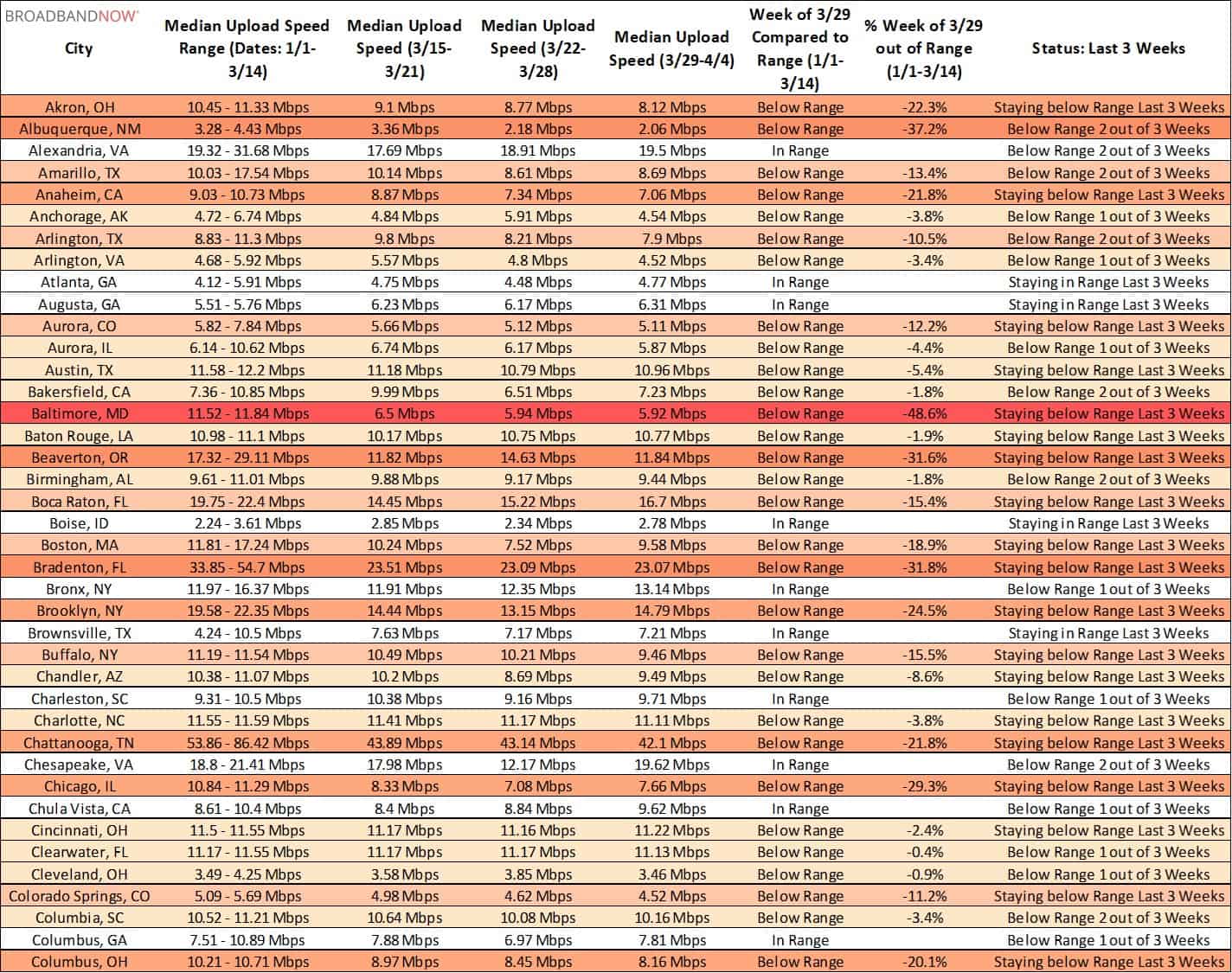
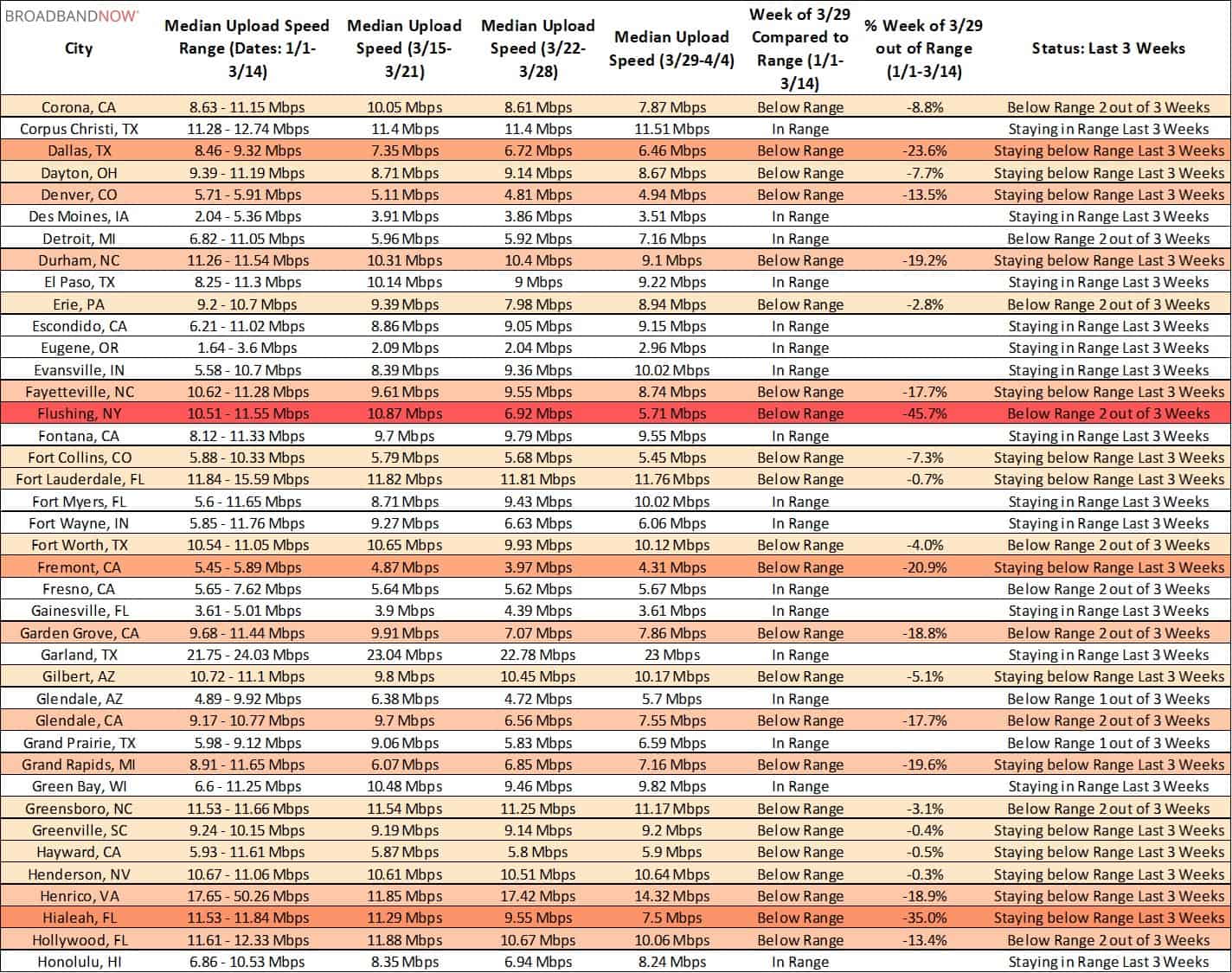
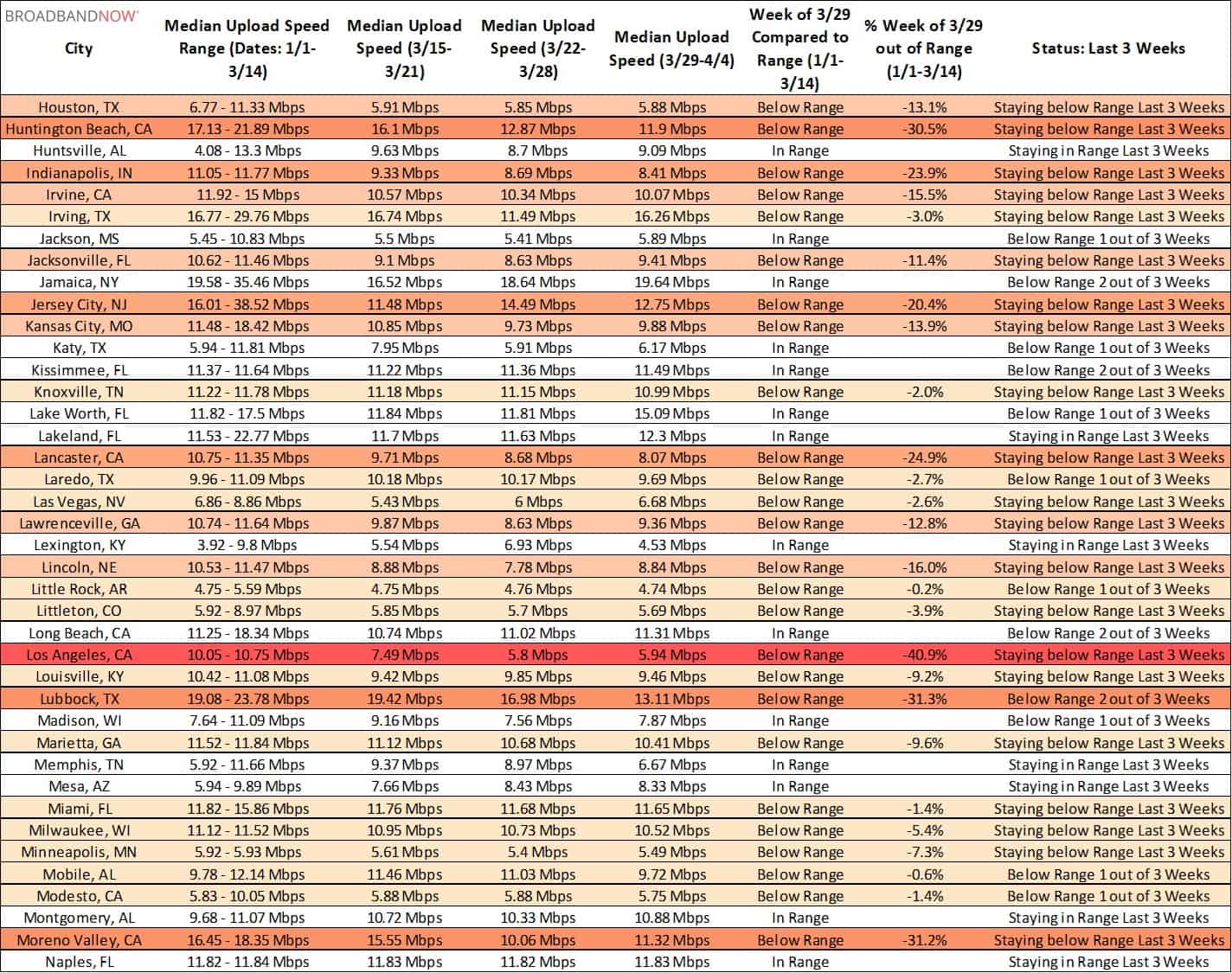
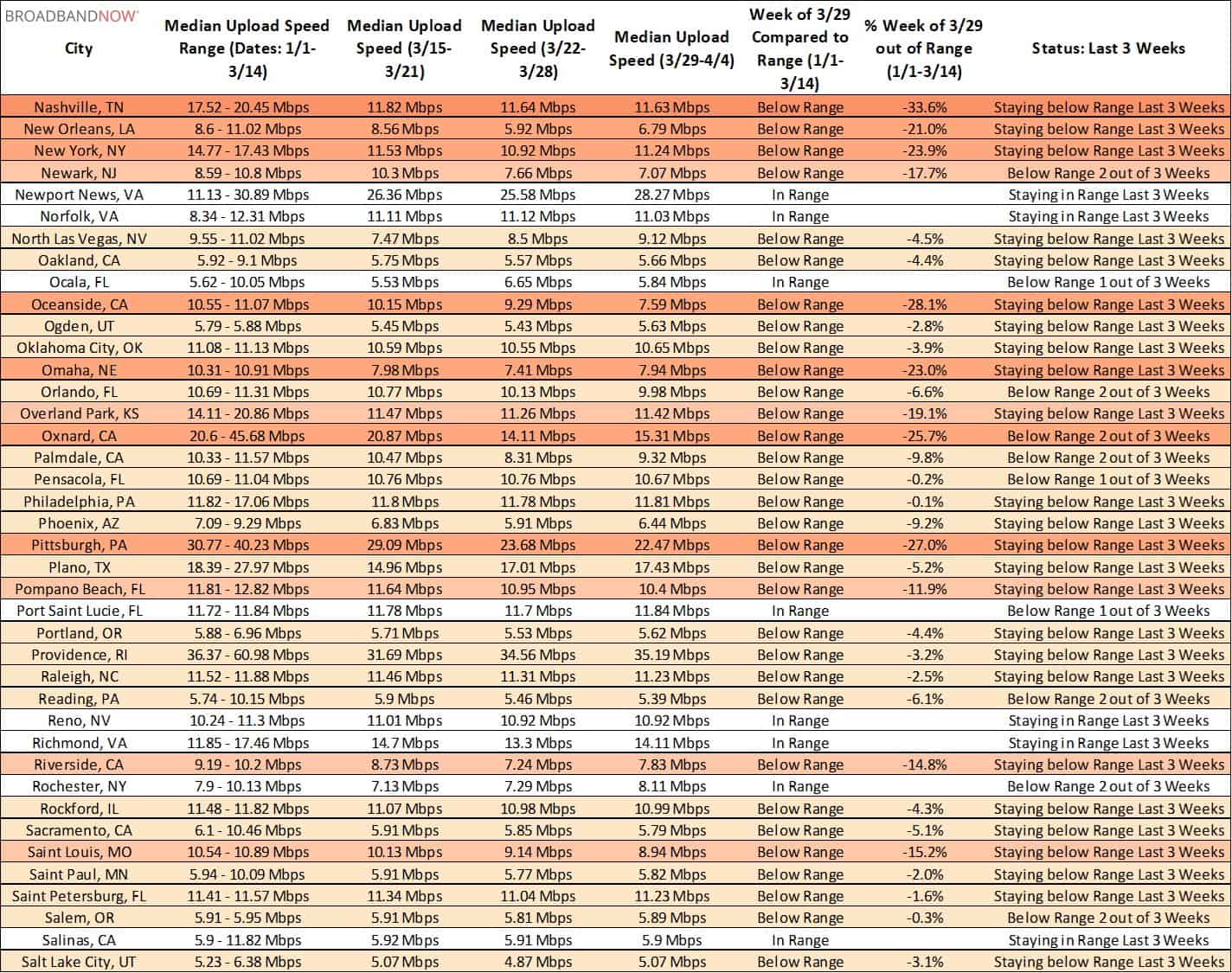
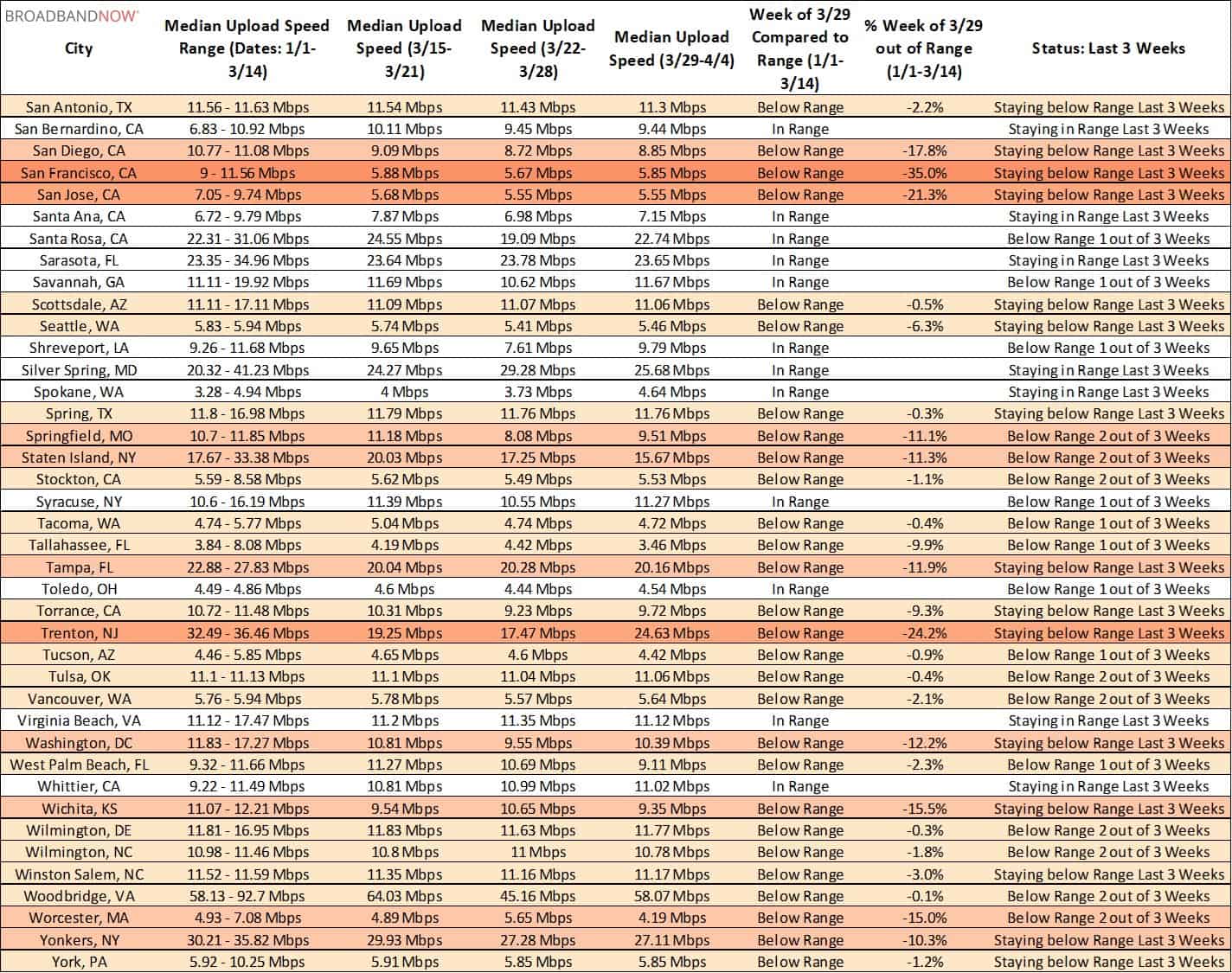
Download Speeds Over Time
142 cities experienced a less than 10% decrease in download speed performance over the week of the 29th. This, again, is an improvement over last week, which saw 122 cities holding relatively steady.
Several cities that were hit especially hard last week are now showing signs of recovering as well, including Austin, San Jose, and others. Still, four cities continued to experience significant decreases of more than 40% out of range, including Lawrenceville, Georgia, Rochester, New York, Saint Paul, Minnesota, and new addition Evansville, Indiana.
The tables below show download speeds comparing the past three weeks to the weeks of 1/1 to 3/14 for the top 200 U.S. cities by population, in alphabetical order.





Prior Reports
This report is the latest in a series of reports looking into the stability of American internet networks amid the coronavirus pandemic. You can read prior weeks’ reports below:
- Home Internet Connections Holding Steady In Most Major US Cities Amid Mass Shift To Remote Work
- Internet Speed Analysis: Top 200 Cities, March 15th – 21st
- Internet Speed Analysis: Rural, Top 200 Cities March 22nd – 28th
About The Data
We analyzed raw speed test data from M-Lab for the top 200 cities by population in the U.S. in order to determine how well ISP’s are coping with this unprecedented surge in demand. Data was taken from the past 14 calendar weeks, and we calculated median download speeds and ranges for every city listed based on this information.
We also looked at the rural areas as defined by the CDC’s Urban–Rural Classification Scheme as non-metropolitan areas and measured their speeds, in aggregate, by week. The M-Lab’s data we used includes all users running speed tests on various websites, and does not separate by device type or ISP.

